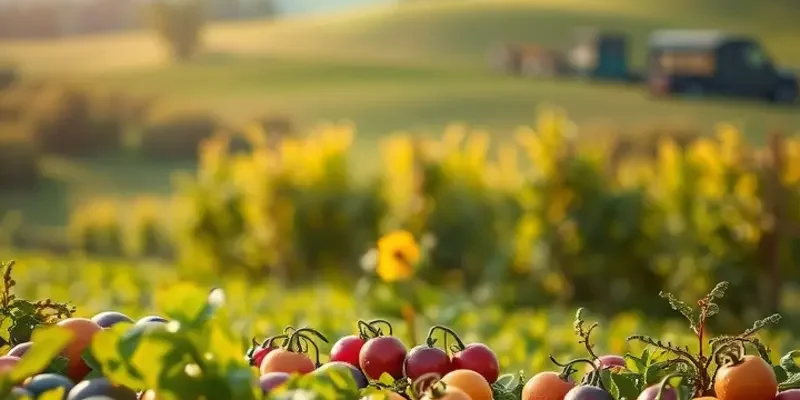Food is more than sustenance; it is a reflection of our histories and identities. From family recipes passed down through generations to the local ingredients that define a cuisine, every dish tells a story. By delving into global culinary traditions, we can uncover the rich tapestry of cultures that shape our culinary experiences. Join us on a flavorful journey as we explore how food and cultural identity intertwine in diverse communities around the world.
The Flavorful Tapestry of Culinary Traditions

Food transcends mere sustenance, firmly woven into the cultural fabric of communities worldwide. It serves as a tangible link to the past, embodying traditions, stories, and rituals that define communal identity. Chinua Achebe poignantly reflected on food as a core aspect of cultural identity, a sentiment echoed across diverse culinary landscapes.
Consider Ethiopian cuisine, rich in history and tradition, often centered around the communal eating of injera, a sourdough flatbread. This bread acts as both plate and utensil, encouraging shared meals that foster community ties. The preparation of dishes like doro wat—a spicy chicken stew—often follows strict rituals, embodying familial respect and hospitality.
In the vast tapestry of Indian cuisine, the layering of spices tells stories of trade, conquest, and culture. Dishes vary dramatically across regions, yet each meticulously curated spice blend reflects deep cultural roots. The use of tandoor ovens, as seen in northern India’s naan and tandoori dishes, speaks to ancient methods that have adapted yet remain central to Indian culinary identity.
Italian cooking epitomizes the harmony of simplicity and tradition. Meals like pasta al forno and risotto alla milanese symbolize the regional diversity inherent in Italian cuisine. Each dish carries history, with recipes passed down through generations, maintaining an authentic connection to ancestral lands. The Italian dinner table, much like the Ethiopian gojo bet, manifests communal bonds, reinforcing identity through shared experience.
While these traditions maintain deep roots, they are not static. Globalization and migration lead to the adaptation of culinary practices, blending old with new. Yet, even as these traditions evolve, they remain anchored in a community’s identity, providing a sense of continuity amidst change. For example, the adaptation of culinary influences through trade has added layers of complexity to these traditional palates (explore more).
The rituals accompanying these cuisines are as significant as the ingredients themselves. Whether brewing a pot of Italian espresso as a daily ritual or the Ethiopian coffee ceremony symbolizing respect and friendship, these actions embody cultural signals that transcend words.
Culinary traditions thus serve as a living record of cultural identity, offering insight into historical narratives, social structures, and community values. They invite us to consider not just the tangible ingredients on our plates but the rich, intangible heritage that nourishes our souls.
Crossroads of Culinary Influence: Fusion and Globalization

As cultures intersect and boundaries blur, food becomes both a canvas for creativity and a means of connection. Globalization presents both opportunities and challenges in culinary realms. On one hand, it fosters innovation by bringing diverse tastes to the foreground. On the other, it risks eroding age-old culinary traditions.
Fusion cuisines emerge from this intersection, offering innovative dishes like Korean tacos and sushi burritos. These dishes artfully combine disparate culinary elements, resulting in flavors both familiar and novel. However, the delicate balance between honoring heritage and embracing new tastes is not easily maintained.
The creation of fusion dishes requires a deep understanding and respect for the cuisines involved. Chefs like Roy Choi, credited with popularizing Korean tacos, emphasize respect for the authenticity of flavors that inspire their creations. They argue that true fusion respects and highlights the shared themes and histories across cultures.
However, the line between fusion and appropriation is thin. Culinary appropriation occurs when elements of a culture’s cuisine are used without respect or understanding. It often strips away the cultural significance, reducing a rich culinary tradition to a mere trend. This practice can lead to the loss of cultural identity and marginalization of the original culinary communities.
Despite these concerns, cultural exchange in the culinary world offers numerous benefits. It promotes inclusivity, understanding, and appreciation across different cultures. Celebrating diverse flavors encourages dialogue and builds bridges, converting potential culinary clashes into symbiotic relationships.
Many chefs weave their backgrounds into creative dishes by embracing authenticity and innovation concurrently. For instance, Chef Edward Lee, who merges Korean roots with Southern American cuisine, emphasizes respect for traditional techniques while incorporating new elements.
In addition to fostering creativity, fusion cuisines engage in sustainability efforts. By using local, seasonal ingredients, chefs can create sustainable dishes while experimenting with global flavors. Exploring Global Culinary Influences highlights how trade influences these creations, offering a symbiotic cycle of influence and variation.
In conclusion, the crossroads of culinary influence serve as a rich ground for exploration, provided they are treated with respect and understanding. As the world continues to grow closer, it is crucial to remember the origins of the flavors we cherish while welcoming what new traditions bring to the table.
Final words
Food serves as a vital thread that stitches together the fabric of our cultural identities. As we navigate a world filled with culinary diversity, it’s essential to honor the traditions that shape our palates while remaining open to the influence of globalization and fusion. By appreciating the rich histories behind our favorite dishes and understanding the nuances of cultural exchange, we can savor not just the flavors but also the stories that accompany each meal. The next time you sit down to eat, consider the cultural journey of what’s on your plate.








